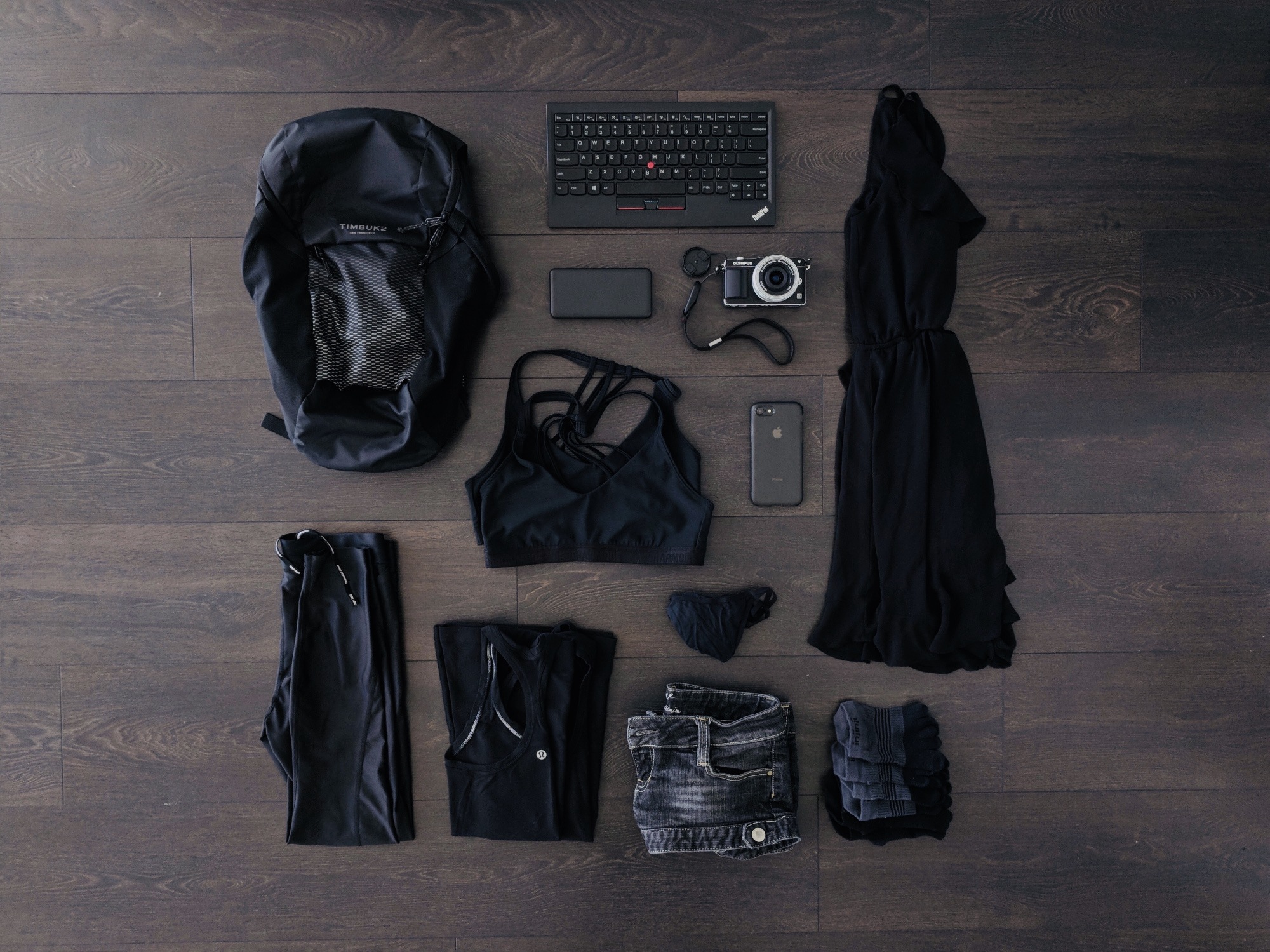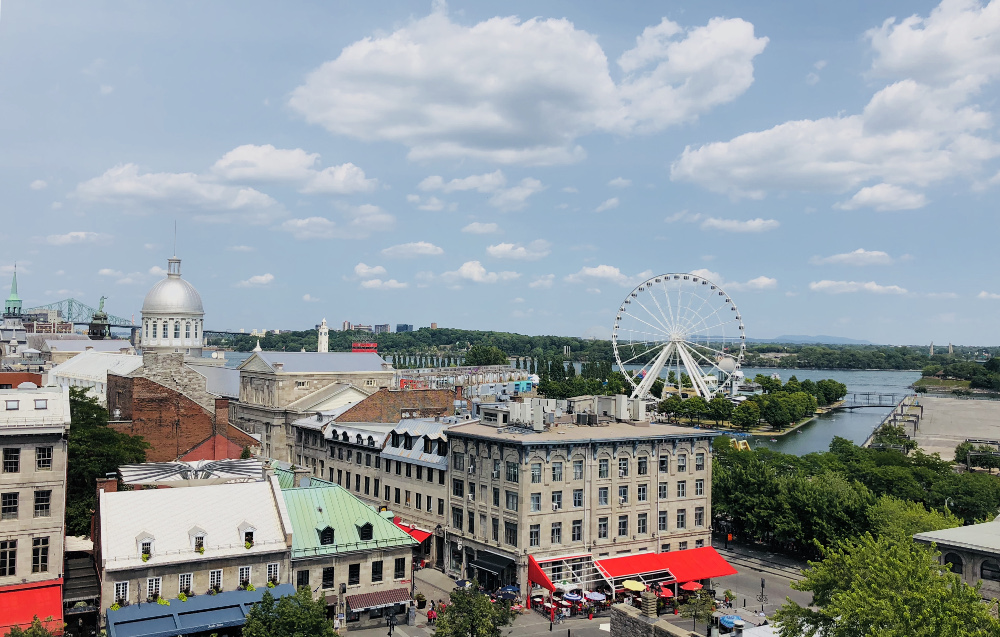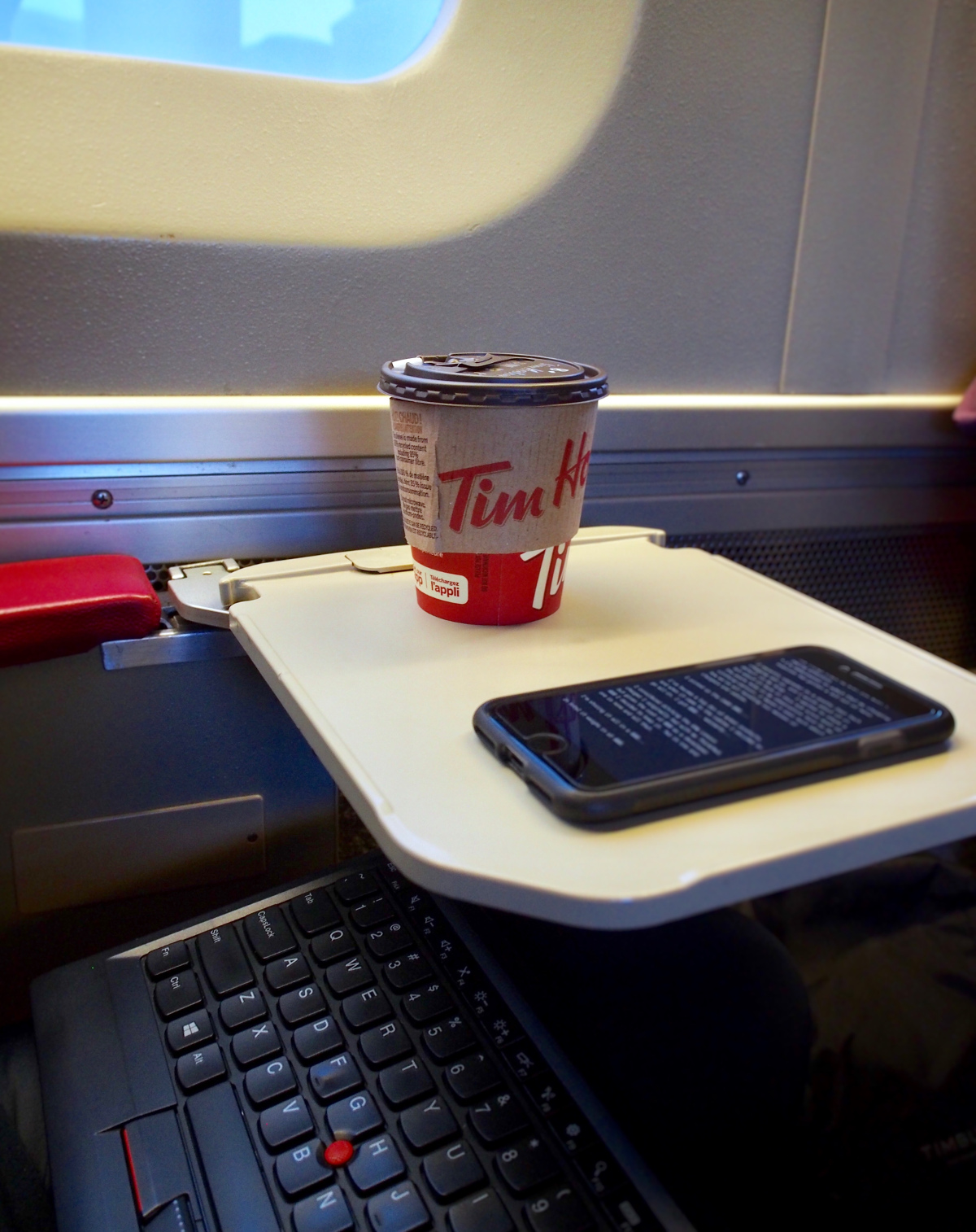What I've learned about focus on the trips in-between
Sun Jul 15, 2018 · 5 min read

Sun Jul 15, 2018 · 5 min read
While I take most of my trips with all my belongings in one bag, on shorter “branch” excursions I don’t always need to bring everything I own. On a day trip or round journey of just a few days or so, I’ll leave my main carry-on at the hotel or borrowed abode and just take a light day pack. After going down to just one bag to begin with, this may seem like a small difference - however, I find these little experiments significantly beneficial.
Somewhere in-between bringing all my things and no bag at all is a pragmatic, still liberating, middle-ground. I enjoy it most on trips like the one I recently took - a leisurely inter-province train journey to beautiful Montreal, Canada.

A view of downtown from a rooftop restaurant
I was able to still get work done on the half-day train journey after the happy discovery that my ThinkPad Bluetooth keyboard works just fine with my iPhone 8! I had the comfort of a full-size keyboard without having to bring my (by comparison) heavier laptop. This simple lightweight set up helped me make full use of the journey, and I got a lot of writing done while the countryside scrolled by.

My lightweight writing set up, with the keyboard in my lap and my phone as a screen on the (unexpectedly tiny!) fold-out tray. Obligatory Tim's inclusion.
The other benefit to working without my laptop is the increased capacity to focus that it creates. Having only the small screen of my phone helped prevent me from getting distracted by other apps and windows. My phone already has all the pop-up notifications turned off. When I write (I use iA Writer), it’s just me and my words on the screen.
Some of this line of thinking has been brought on by my current audiobook. I’ve been listening to Cal Newport’s Deep Work and highly recommend it. It helps you to further understand the importance of creating a distraction-free environment, provides practical strategies for doing so, and shows just how much more productive you can be. If you want to have even better concentration and focus, and maybe you’re hoping to hit a specific goal or finish a project - you’ll love this book. It’ll give you superpowers. I much better understand now why I have some of my most productive writing sessions on planes, and I plan to make full use of my time in transit in the future.
Learning more about honing my mind’s ability to focus has made me also apply this thinking to the things I own. While some would say that living out of one bag already makes me pretty minimalist, I still get an increased sense of lightness and freedom when I take these in-between trips with only some of my gear. In a way, it gives me an opportunity to focus in on the things I really need. Taking only enough for the next day or two is about as in-the-moment as I can get when it comes to “stuff.”

Including what I wore on the way there:
Not pictured:
I was pretty close with my estimates for how often I would wear the things I brought. In retrospect, I would have done without one of the tank tops and the leggings, and instead brought another pair of socks. The weather was hotter than forecasted, and I ended up using the dress and shorts twice more than I predicted. Even without the hotter weather, it would have been nice to save the roughly 350g of extra bulk and weight by doing without the leggings and two of the tank tops. It would have been pretty trivial to wash-and-wear the one tank top, since it would have had plenty of time to dry on the day I wore the dress.
The decrease in some clothing would also have helped with how packed-full the Rapid Pack felt. I think packing this much for a three-day trip is closer to the limits of this 14L daypack than I’d like.
These trips in-between give me unique chances to experiment with having just a subset of my items, without having to prematurely, permanently, make changes to my load. I find these chances for experimentation very useful in more than one way. I compare the things I brought with what I used, and then with what I really needed in retrospect. When I do this on such a distilled level, I learn more not only about the gear I like and find useful, but also about myself and what I personally find important. I’m then better prepared to make more precise decisions in the future based on the experiences I’ve had in the past. This precision applies to more than just packing - it helps inform where I choose to direct my focus and intention, and thus, how I live my life.
I think it’s important to carry this sense of experimentation into other areas. I apply it to everything from the food I eat, to whom I spend my time with. The chance to take a trip in-between, and to briefly liberate yourself from whatever “the norm” happens to be, can be a revealing and refreshing exercise that helps to inform our focus.